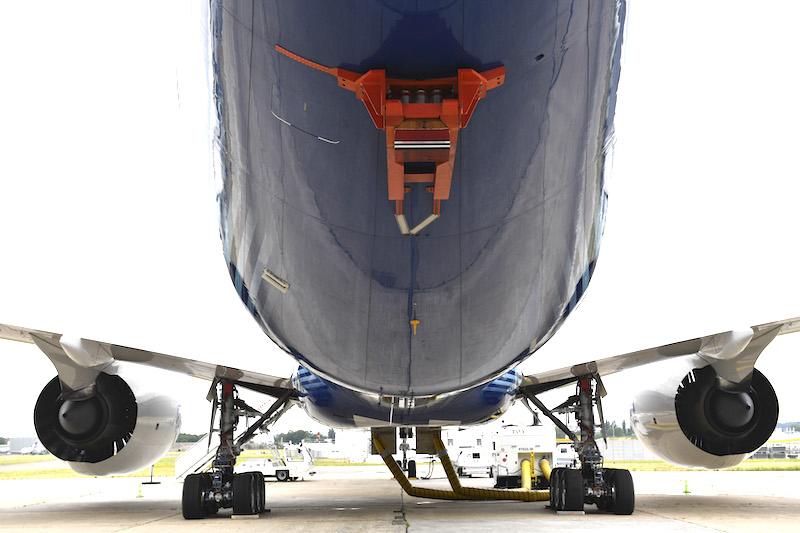
Boeing has completed VMU (velocity minimum unstick) testing on the 777-9.
LE BOURGET—Boeing has completed responses to questions from the European Union Aviation Safety Agency (EASA) and the FAA over new design aspects of the 777X, including redundancy in the flight control system, and says it is poised to begin certification of the aircraft as soon as the U.S. regulator gives the all-clear to begin testing.
The 777-9, which is making its Paris Air Show debut, is targeted at entry-into-service in 2025 having been delayed by a series of issues ranging from the global pandemic to increased regulatory scrutiny in the wake of the 737 MAX accidents in 2018 and 2019. The aircraft’s appearance at the show comes as Boeing awaits type inspection authorization (TIA) from the FAA—a long-anticipated move that will mark the formal start of certification.
“We are ready from an airplane standpoint for TIA,” says Justin Hale, Boeing's 777X customer leader and product marketing director. The three active development aircraft have so far amassed around 3,000 flight hours and 1,000 cycles in the program. The fourth is being refurbished with a full interior prior to joining the test campaign later this year.
Tests have included validation of components added to address regulator concerns over potential common mode failures in the 777X flight control system and “have all been related to qualification of those parts,” Hale says. Technical exchanges with the FAA are a routine part of any Boeing certification project. But formal queries directly from EASA are rarer, since EASA's role under the U.S.-European Union safety bilateral is to validate the FAA's findings. With EASA seemingly satisfied, the process has “got us back to where the bilateral will work between the U.S. and EASA,” he adds.
Although FAA TIA is not dependent on EASA approval of the certification basis, the 777X program needs international compliance across the board to progress. Agreement with EASA rebuilds towards the standard bilateral convention between the U.S. and Europe under which each regulator approves the validating authority’s (VA) system without any technical involvement or approval by the VA.
Upcoming tests include minimum landing distance and braking system performance with the 777-9 prototype, WH001, while the second aircraft WH002 is performing stability and control as well as ride quality work. The third aircraft, WH003, is focused on engine performance testing.
“We just completed takeoff performance and VMU (velocity minimum unstick) testing,” says Heather Ross, an experimental test pilot at Boeing. “That was a huge risk reduction effort to get that completed. We're still working on takeoff and landing performance and that testing will be continuing later on. We've got some more stability and control testing coming up as keep progressing the loads of updated software for our flight controls,” she adds.
